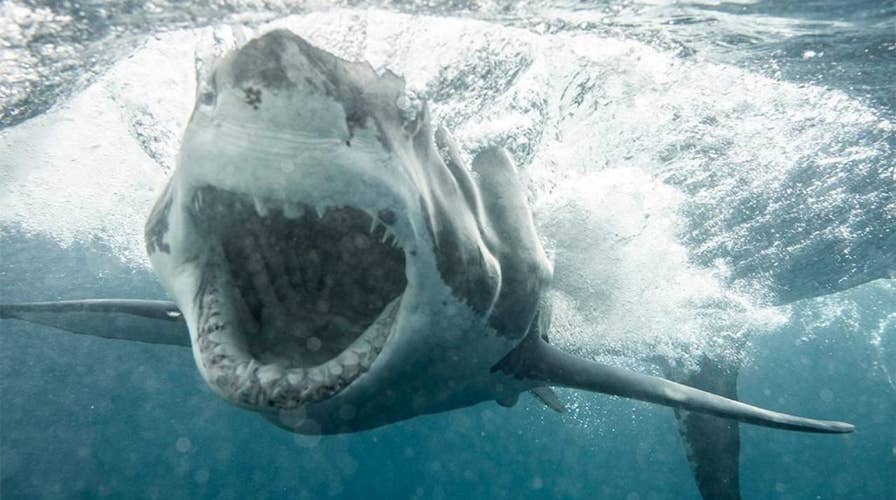It appears one of the most fear-inducing predators in the ocean may have a fear of its own.
A new study led by the Monterey Bay Aquarium and published Tuesday in Nature found great white sharks leave their “preferred hunting ground” when orcas — also known as killer whales — enter it. In fact, researchers found the sharks won’t return to those areas for roughly a year — even if the orcas don’t stay that long.
To come to this conclusion, researchers “documented four encounters between the top predators at Southeast Farallon Island in the Greater Farallones National Marine Sanctuary off San Francisco, California,” per the Monterey Bay Aquarium's news release on the findings. The scientists then “analyzed the interactions using data from 165 white sharks tagged between 2006 and 2013, and compiled 27 years of seal, orca and shark surveys at the Farallones.”
GREAT WHITE SHARKS HAVE ‘TOXIC’ HEAVY METALS IN THEIR BLOOD, STUDY FINDS
More specifically, researchers determined when both sharks and orcas were present at the Farallon Islands by comparing data from the electronic shark tags with “field observations of orca sightings.”
“This made it possible to demonstrate the outcome on the rare instances when the predators encountered each other,” per the study.
The “robust data sources” helped scientists to “conclusively show how white sharks clear out of the area when the orcas show up,” Jim Tietz, a study co-author, said in an online statement.
The sharks fled the island when the orcas arrived — and did not return until the following season — in all of the cases studied. Data from the electronic tags even showed all the great white sharks left the area just minutes after orcas arrived. This was true even when the killer whales were present for less than an hour.
“It turns out these risk effects are very strong even for large predators like white sharks — strong enough to redirect their hunting activity to less preferred but safer areas."
"On average we document around 40 elephant seal predation events by white sharks at Southeast Farallon Island each season," Monterey Bay Aquarium scientist Scot Anderson said in a statement. "After orcas show up, we don't see a single shark and there are no more kills."
"These are huge white sharks. Some are over 18 feet long and they usually rule the roost here," Anderson continued.
It's unclear why exactly the sharks leave. Researchers suspect it could be because the sharks are prey for the orcas, or possibly because they are bullied over food and ultimately forced out.
Sharks hightailing out of the area had an indirect benefit for elephant seals — which are often the preferred meal of both sharks and killer whales — in the Farallones. Researchers found there were “four to seven times fewer predation events on elephant seals in the years white sharks left,” per the study.
GREAT WHITE SHARK CHARGES AT DIVER IN TERRIFYING MOMENT CAPTURED ON FILM
"We don't typically think about how fear and risk aversion might play a role in shaping where large predators hunt and how that influences ocean ecosystems,” added Salvador Jorgensen, the study’s lead author. “It turns out these risk effects are very strong even for large predators like white sharks — strong enough to redirect their hunting activity to less preferred but safer areas."
Jorgensen explained the study is important because it is one of the few that "demonstrates how food chains are not always linear," especially in the ocean. Interactions between predators are more difficult to document and analyze due to their infrequency.





















